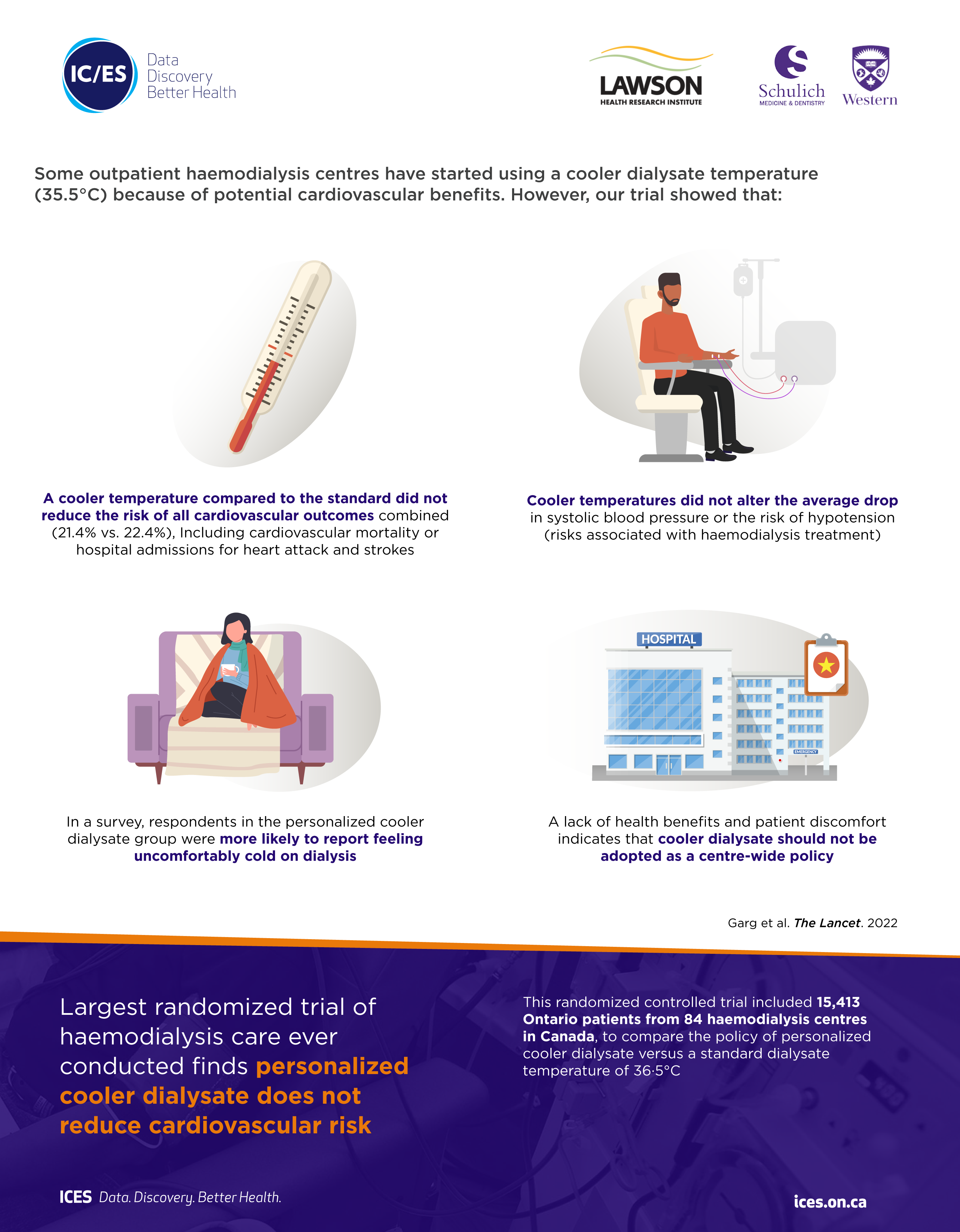

LONDON, ON – Published in the Lancet, findings from a large clinical trial through Lawson Health Research Institute (Lawson), ICES Western and Western University suggest that lowering dialysis temperatures does not lead to improved patient outcomes, despite previous studies suggesting otherwise.
The standard temperature for dialysis treatments is approximately 36.5 degrees Celsius, which is similar to a human’s body temperature. But over the past several years, there have been small studies suggesting that cooler dialysis temperatures could reduce the risk of cardiovascular-related deaths and hospitalizations and better maintain blood pressures during hemodialysis treatments.
“There have been studies looking at whether a lower dialysis temperature would result in better outcomes,” says Dr. Amit Garg, Lawson Scientist, Site Director for ICES Western and Associate Dean of Clinical Research at Western’s Schulich School of Medicine & Dentistry. “The studies have been limited, especially in numbers, yet the practice of lowering the dialysis temperature has become a practice growing in popularity. Some institutions have even made this a centre-wide policy for all hemodialysis patients.”

Over the course of four years, the research team examined outcomes of both standard and cooler dialysis treatments in more than 15,000 patients. This was done across 84 of 97 hemodialysis centres in Ontario, and in terms of the number of patients, it the largest hemodialysis trial ever published worldwide. Ten of the centres were those operated through London Health Sciences Centre (LHSC).
“We wanted to determine if lowering the dialysis temperature would help people live longer and healthier,” explains Dr. Garg, who is also a Nephrologist at LHSC. “We also measured symptoms and how people felt on the dialysis. We set out to collect high-quality evidence to make sure we are doing the right thing for patients.”
The research team examined linked healthcare data sets from ICES. The trial period included a total of 4.3 million hemodialysis treatments. Patients were randomized to receive dialysis with either the standard temperature or a lowered dialysis temperature of 0.5 degrees Celsius to 0.9 degrees Celsius below each patient’s measured pre-dialysis body temperature, with a lowest recommended temperature of 35.5 degrees Celsius.
“We did not see any benefits to patients who had the lowered temperature with no improvements to cardiovascular health. Some patients experienced discomfort from the lower dialysis temperature,” says Dr. Garg. “The results suggest we should not be adopting lower dialysis temperatures, as a centre-wide policy, and its utility in select patient care warrants scrutiny.”
The findings were presented by Dr. Garg at the American Society of Nephrology conference in Orlando, Florida on Friday Nov 4th @ 11:45 am EST.

Communications Consultant & External Relations
Lawson Health Research Institute
T: 519-685-8500 ext. 75664
C. 519-619-3872
@email